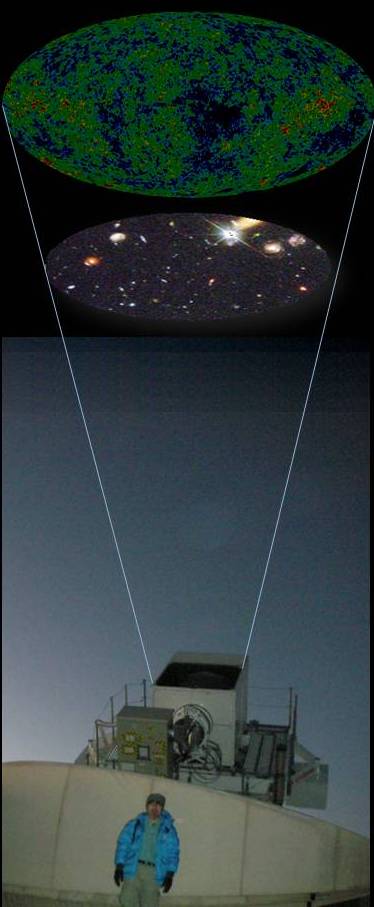
Outline
In this research group, we study the Dark Age of the Universe through observations of Cosmic Infrared Background (CIRB). The Dark Age is the period between the recombination epoch, when the universe became neutral and CMB was left, and the reionization epoch, when the first stars were formed by density perturbations.
Recent observations have found that CIRB in the near- and mid-infrared
region has spectrum shape with a peak near 1μm wavelength. The shape is
unique in that its brightness and fluctuations cannot be explained by the
integrated flux of the external galaxies towards the line of sight. It
is thought to be caused by ionizing ultraviolet radiation, mainly the Lyman
alpha lines from the first generation stars and galaxies. The observation
attracts much attention as a way to probe the Dark Ages.
We will continuously promote the rocket experiments aiming at a more advanced
research. We will study contributions from the first stars and galaxies
with detailed observations on the Lyman alpha lines and CIRB fluctuations
using the infrared astronomical satellite AKARI and a rocket mission CIBER.
As well as obtaining scientific results, our aim is to develop basis for future satellite missions such as SPICA in collaboration with Group A02.
Moreover, we will plan and study “the ultimate CIRB observation mission” which will completely remove the effects of zodiacal light (foreground radiation) utilizing interplanetary probe that will escape from solar dust clouds.
We will analyze AKARI’s data in order to detect CIRB in the far-infrared region which carries information on components such as dust radiation from primitive new-born galaxies and hydrogen molecule lines accompanied by the first star formation. In collaboration with Groups A01 and A04, we will conduct a comprehensive research on the effects of the objects in the Dark Ages on CMB.
